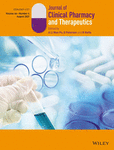Improving meningococcal MenACWY and 4CMenB/meningococcal group B vaccine-related health literacy in patients: Importance of readability of pharmaceutical Patient Leaflets
Funding information
None.
ABSTRACT
What is known and objective
Patient information leaflets (PILs) or Patient Leaflets (PLs) formally accompany dispensed medicines and are intended to provide the patient with information on how to use the medicine safely. To date, there have been no studies that have examined the readability of meningococcal vaccine patient-facing information, including information contained within the vaccine PIL. Given the role of pharmacists in presenting PILs to patients, it was, therefore, the aim of this study to quantitatively analyse the readability of Patient Leaflets, which accompany licensed meningococcal vaccines in the UK and US and to compare PILs to vaccine pharmaceutical manufacturers’ summary of product characteristics (SPC), as well as other patient-facing vaccine-related information.
Methods
Five sources of meningococcal vaccine information were examined for the licensed meningococcal vaccines in the UK (Bexsero, Menveo, Menitorix, Trumenba, Nimenrix & NeisVac-C) and in the United States (Bexsero, Menveo, Trumenba, Menactra, Menomune-A/C/Y/W-135, Menquadfi), including as follows: (i) SPC (Electronic Medicines Compendium, UK), (ii) Package Insert (FDA; USA), (iii) Patient Leaflet (Electronic Medicines Compendium, UK), (iv) Vaccine pharmaceutical websites and (v) government web resources. Readability was examined employing 10 readability metrics, including the Flesch Reading Ease and the Flesch-Kincaid Grade level.
Results and discussion
The information source with the greatest readability scores was the UK Patient Leaflet, which had a mean Flesch Reading Ease score of 58.1 and a mean Flesch-Kincaid Grade score of 7.3, followed by the US Department of Health & Human Services patient-facing website for vaccines (55.9 & 8, respectively), followed by the US Centers for Disease Control and Prevention Vaccine Information Statement (47.3 & 9.4, respectively). Pharmaceutical patient-facing websites for meningococcal vaccines had mean scores of 44.6 and 9.9, respectively. When compared with UK Patient Leaflets, pharmaceutical websites were statistically different with poorer readability with both Flesch Reading Ease and Flesch-Kincaid Grade Level indices (p = 0.02 & p = 0.04, respectively).
What is new and conclusion
Pharmaceutical meningococcal vaccine PILs were easily read and had statistically significant good readability scores in comparison with vaccine SPCs and US Package Inserts, pharmaceutical product websites and other government patient-facing meningococcal vaccine information. Preparation of patient-facing materials of a complex topic, such as describing meningococcal vaccines, is difficult to accomplish. Although there is a plurality of sources of information through websites and social media, PILs are one of the few sources that are provided directly to patients. This underpins the potential importance of PILs and the importance of their readability. Adoption of readability calculators and scrutiny of materials for their readability will help authors develop materials with improved understanding for vaccine recipients, potentially leading to improved health literacy and vaccine uptake. Renewed efforts should be sought to promote the information within the PIL, thereby maximizing the value of this resource with vaccine recipients, their carers and family.
CONFLICT OF INTEREST
The authors declare no conflicts of interest.
Open Research
DATA AVAILABILITY STATEMENT
Data sharing is not applicable to this article as no new data were generated.




